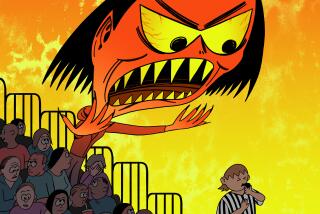Painful lessons, on and off the field
- Share via
Kids who don’t make their high school teams may look with envy at their peers who do. But health experts question whether the players are always well-served by their experience.
For many high school athletes, the sports experience is encumbered by injuries, burnout, poor sportsmanship on the part of players and fans and coaches who want, first and foremost, to win.
The trend among kids to specialize in one sport -- and play it year-round -- takes most of the blame.
Such specialization leads to more pressure, fewer meaningful social interactions and a less diversified high school experience, educators say.
This myopic devotion to one activity isolates children from a diverse group of peers and interferes with the development of a normal identity, says Daniel R. Gould, director of the Institute for the Study of Youth Sports at Michigan State University.
Although specialized kids may become more adept at throwing curve balls or hitting aces, they’re also more likely to hurt themselves.
The American Academy of Pediatrics says that, across the nation, sports injuries are on the rise. According to a 1999 study in the Journal of Athletic Training, injuries to high school-age athletes number more than 2 million each year and account for 500,000 doctor’s office visits and 30,000 hospitalizations.
Many sports injuries are minor, such as sprains. But doctors say they are seeing an increase in overuse injuries -- including stress fractures, tendinitis, bursitis and chronic pain syndromes (once rarely seen in children).
According to a 1999 report published in the Physician and Sportsmedicine, 30% to 50% of all pediatric sports injuries are due to overuse.
“When you have the same mechanics going over and over and when they don’t have a chance to stop and rest, oftentimes you get overuse injuries,” says Mike West, athletic director at Chino Hills High School and a certified trainer with the National Athletic Trainers’ Assn.
Health experts say some kids are dropping out of sports because of stress and burnout.
By age 13, about 70% of kids have quit sports, according to a study by Michigan State University.
“Now you get kids playing 40, 50 or 100 games a year,” says Jim Thompson, executive director of the Positive Coaching Alliance in Palo Alto, Calif.
“At a certain point, kids say, ‘I’d like to stay home and play video games.’ It becomes like a job. You wear kids out physically, and you wear them out emotionally.”
In a series of focus groups conducted at the University of Maine’s Center for Sport and Coaching, kids representing a range of ability and sports achievement said they feel too much pressure when playing high school sports, says director Karen Brown.
Some kids “go through their school years with this pressure to be stars,” she says.
Many students said coaches were too demanding of perfection and couldn’t tolerate losing.
Gould says this emphasis on winning ignores the fact that sports is mostly about staying fit and healthy.
“Coaching through fear and intimidation” -- and tactics such as having players run laps or do push-ups when they make mistakes during practice -- works really well in the short run, he says.
“But in the long run, if I’m a coach, I want kids to learn that being fit feels good; that running isn’t just something you do when you’re in trouble. As a coach, my job is to get kids to fall in love with physical activity.”
More to Read
Go beyond the scoreboard
Get the latest on L.A.'s teams in the daily Sports Report newsletter.
You may occasionally receive promotional content from the Los Angeles Times.










